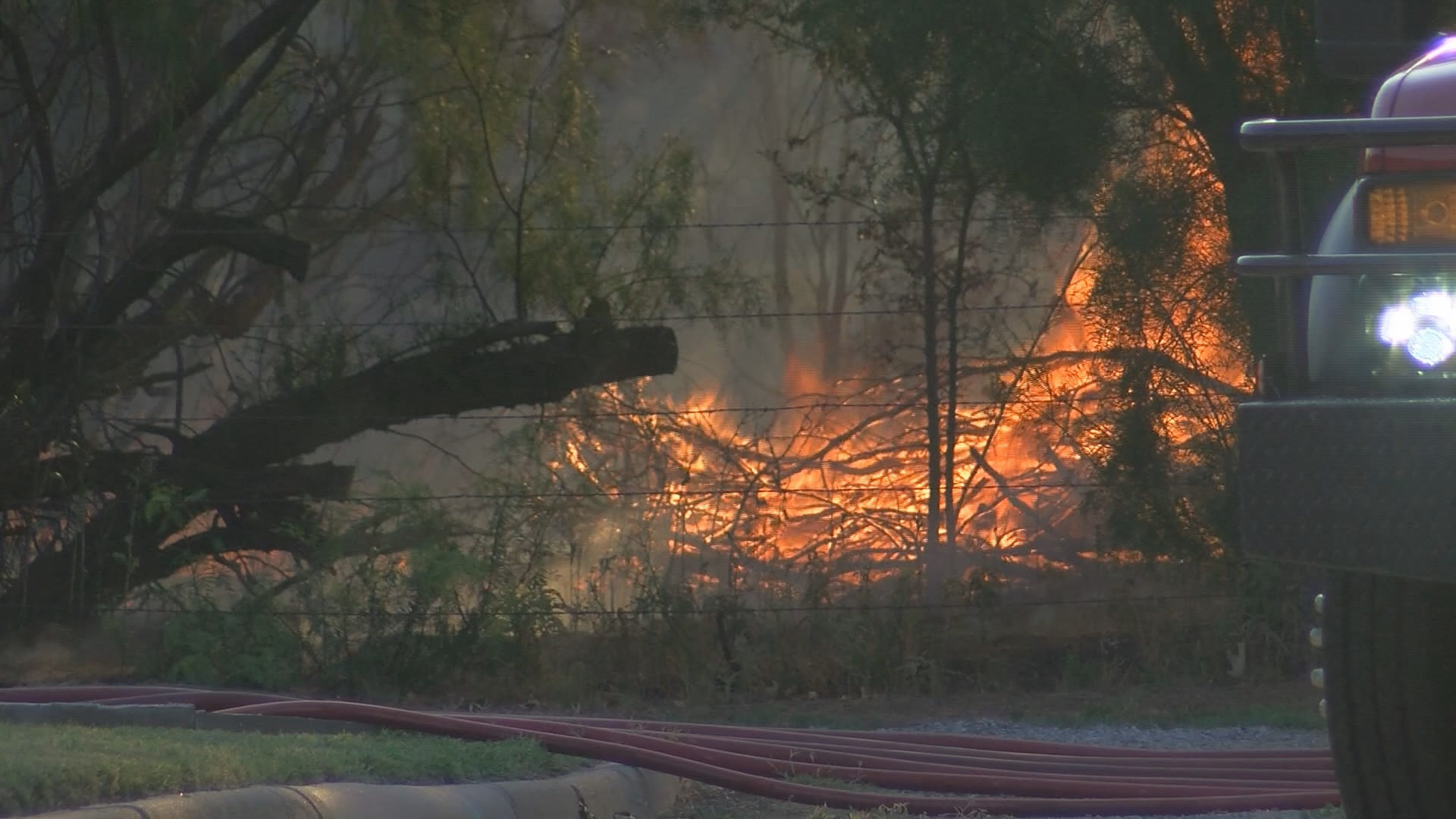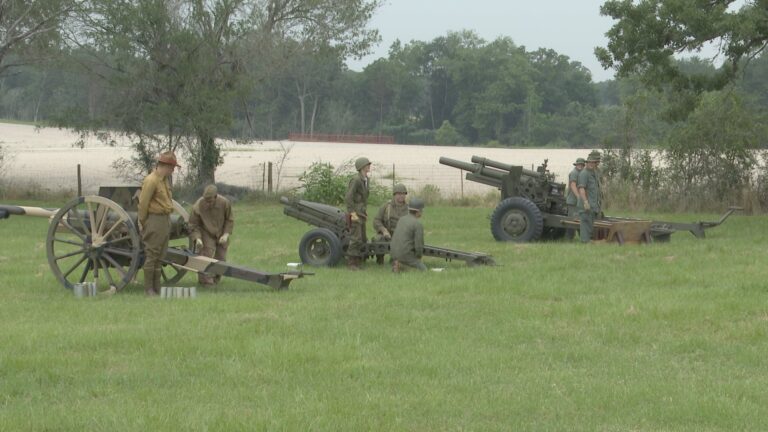High fire danger persists as Texas A&M Forest Service battles wildfires statewide
COLLEGE STATION, Texas (KBTX) -While the Lone Star State is no stranger to wildfires they have increased recently due to the record-setting temperatures across most of the state. To counter the dangerous conditions, nearly half of Texas counties have issued burn bans, and the Texas A&M Forest Service is leading the charge to contain and combat the spreading blazes.
Currently, the Texas A&M Forest Service is actively fighting three wildfires, and in the past week alone, they have successfully controlled over a dozen wildfires, including incidents in Leon and Grimes counties. Since Friday, the agency has responded to 19 new requests for assistance on wildfires that have scorched more than 500 acres of land across the state.
The firefighting operations are being coordinated at the Texas A&M Forest Service Emergency Operations Center, where experts monitor fire risk and manage firefighting resources and personnel. At the helm of this crucial operation is Wes Moorehead, the Associate Director and Fire Chief, who oversees more than 400 personnel that are assisting local departments throughout the state.
Texas A&M Forest Service Emergency Operations Center. (Donnie Tuggle/Bryan-College Station)
Moorehead emphasized the critical role played by the Texas A&M Forest Service in supporting firefighting efforts. The agency deploys heavy equipment like bulldozers, air tankers, and skilled wildland firefighters to tackle the wildfires effectively.
Texas A&M Forest Service boasts an extensive fleet of equipment for wildfire and emergency response, including 104 dozers, 9 motor graders, 21 wildland engines, and 2 water tenders. Among the agency’s 544 full-time employees, 352 possess wildfire or wildfire support qualifications, highlighting their expertise in handling such crises.
“The Texas A&M Forest Service comes into support their efforts and so we bring in heavy equipment in the form of bulldozers, we bring aircraft in the form of air tankers as well as wildland firefighters to the scene to help compress the wildfire,” said Moorehead.
Wes Moreland, Texas A&M Forest Fire Chief and team member looking at wildfire data on computer (Donnie Tuggle/Bryan-College Station)
Since the beginning of the year, the Texas A&M Forest Service, in collaboration with local fire departments, has been tirelessly responding to nearly 2,000 wildfires, covering an astonishing 50,000 acres of land across the state.
“Up until say six weeks ago we actually had a really mild fire season. We had some good wetting rains in the spring and so we did see a whole lot of wildfire activity. About six weeks ago we saw the tap shut off we saw the precipitation really just turn off across the state and since then we’ve dried out significantly and that’s really amplified our wildfire response,’ said Moorehead.
Beyond the Emergency Operations Center, aerial support plays a crucial role in managing wildfire operations. Pilots like Rob Elek and Ariel attack specialist Kurt Atkins of the U.S. Forest Service are stationed at Easterwood Airport, ready to deploy their aircraft at a moment’s notice. With 16 aircraft staged within the state for wildfire response, this year alone has witnessed 49 aircraft logging 521 hours of flight time, dropping 551,492 gallons of water and retardant to combat the wildfires.
U.S. Forest Service Pilot Rob Elek and U.S. Forest Service Region 4 Aerial Attack Specialist Kurt Atkins (Donnie Tuggle/Bryan-College Station)
The aircraft that Elek and Atkins fly function as a mobile air traffic control center above the fire, providing crucial aerial support and aid in managing operations.
“With all the aircrafts coming in at various altitudes and various levels we help sequence that safely so that nobody’s crashing into each other and all the water retardant goes into the right place where they’re asking for it,” said Atkins.
Firefighting aircraft at Easterwood Airport (Donnie Tuggle/Bryan-College Station)
Back at the EOC, the combination of skilled personnel with wildfire expertise and data-driven predictions of fire-prone areas enables the Texas A&M Forest Service to proactively mobilize resources before a fire even occurs. Moorehead says this proactive approach helps efficiently and effectively assign firefighting resources across the vast expanse of Texas.
“As you look at a state as big as Texas, it is quite a task to track all those resources and make sure we’re assigning them in the most efficient and effective manner possible,” said Moorehead.
The magnitude of the wildfires has led other states to seek assistance from the Texas A&M Forest Service. Additionally, resources from land management agencies across the country are currently mobilized to support Texas in its wildfire response. So far this year, the agency has deployed 125 personnel and 41 pieces of equipment from other states to bolster their firefighting efforts.







